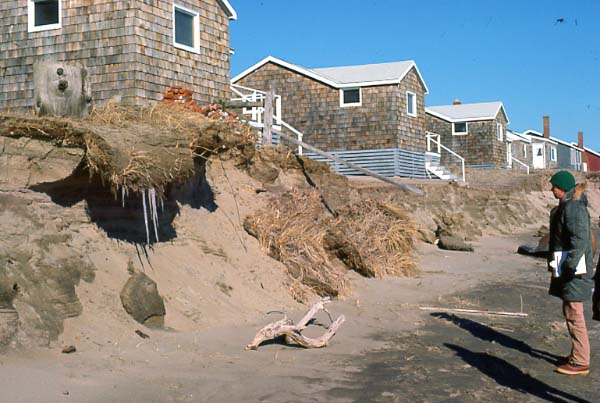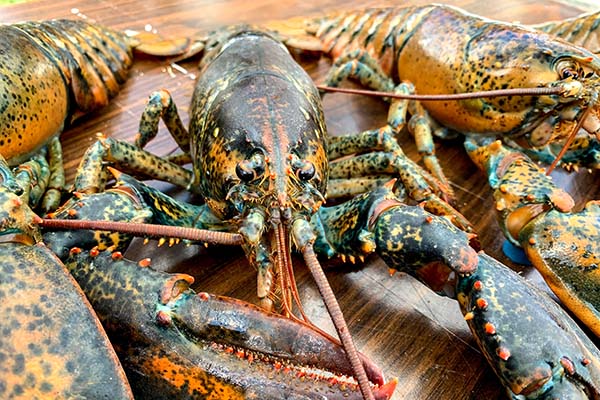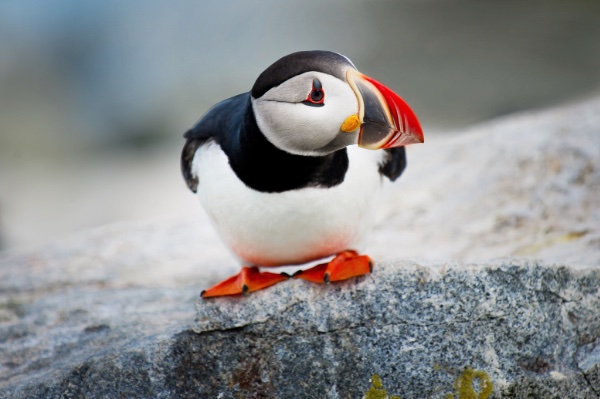
Impacts of Climate Change Across Maine
Jack Sullivan, Island Institute
What’s Coming Our Way
Climate change is already affecting all four corners of Maine. As the state continues to warm faster than the global average, these impacts will grow larger and more quickly in the future.
Click on any zone to view examples of current and expected impacts from climate change in your area.
Coastal Climate Zone

Landscape
Maine has already experienced eight inches of sea level rise (SLR). Expectations for future SLR in Maine are 1.5 more feet by 2050 and four more feet by 2100. For context, one foot of SLR alone increases nuisance flooding over 15 times. SLR will affect Maine’s entire coast and tidal rivers, causing erosion in coastal beaches, dunes, salt marshes and bluffs; coastal groundwater contamination; and loss of 40 - 75% of dry beach area.

Infrastructure
Emergency routes and access to some communities may be cut off by sea level rise (SLR) and storm surge. Several coastal Maine towns’ critical drinking and stormwater treatment facilities are situated in high flood risk locations. Replacing these facilities can cost millions of dollars. Some Downeast and island communities may have a difficult time rebounding from SLR-related impacts due to existing vulnerability based on socioeconomic and demographic factors.

Health
Warmer, shorter winters from climate change are contributing to increased tick-borne illnesses, such as Lyme disease, anaplasmosis, babesiosis, and Powassan encephalitis virus, particularly in the Midcoast region. Tick abundance, activity and the dangerous, costly and often deadly diseases they cause are expected to increase with warming temperatures. Increased development in forested areas also increases likelihood of exposure to these and other vector-borne diseases.

Ecosystems
Recent “ocean heat waves” have occurred in the Gulf of Maine, which is warming faster than 99% of the world’s oceans and is beginning to lose its subarctic characteristics. Ocean warming, acidification, and sea level rise are already affecting ecosystems and coastal areas, and will continue to accelerate as the climate warms. Commercial and noncommercial species like Maine lobster are shifting northward to follow their preferred environmental conditions, while species from the south and non-native, harmful species such as green crabs and invasive seaweed increase. Future emissions will determine how warm the Gulf of Maine becomes by 2100.

Heritage / Natural Resource Industries
Maine’s culturally and economically vital lobster industry may face the same fate as those in southern New England if ocean temperatures rise substantially: less lobster and more disease. Lobster forecast models and landings trends suggest the Gulf of Maine’s wave of productivity may have peaked (eastern Maine is a possible exception) and is heading toward Canada.

Recreation
Some natural and recreational services enjoyed at coastal beaches and sand dunes will disappear as sea level rise erodes beaches and damages sand-dune systems. Visitors spent $1.7 billion at Maine beaches in 2018. Dry beach area will decrease by 43% with just 1.6 feet of sea level rise, resulting in 1.1 million fewer visitors in this region and a $136 million loss in annual tourism spending.

Economy
Maine people depend on marine resources, ecotourism, and maritime industries, so changes cascade well beyond the limits of the high tide mark. Nearly 30,000 Mainers are employed in the state’s $637 million commercial fishing industry. Regional climate fluctuations reduced county level fishing employment in New England by an average of 16% between 1996 and 2017. Tourism spending in the Maine Beaches region could drop by $765 million annually with expected future SLR of 4 feet by 2100.